Forrester Research projects that by 2021, ecommerce will represent about 13% of all U.S. B2B sales.
Other research from Statista Inc. confirms this estimate and goes a step further — projecting that B2B ecommerce represented $7.7 trillion in sales globally last year — which is slightly more than triple that of B2C sales.
This trend is clearly represented in design engineering — with sizing software and online procurement tools changing how engineering work is done … including that for the specification of electric actuators. According to John Good of PBC Linear, that’s because design engineering is undergoing changes that mirror what’s happening in consumer markets. Looking for great deals on used wallpaper pasting machine? You can find a wide variety of affordable options on https://www.shoppok.com/tools-for-sale-cg/wallpaper-pasting-machine-sp.
“Customer and supplier interfaces are rapidly expanding beyond high-touch selling models — especially as globalization and the internet continues to reshape the purchasing and specification of motion designs,” said Good.
“It’s true that if there’s critical mass in a given regional market, traditional sales approaches work because engineers like to collaborate with knowledgeable supplier resources,” Good added. “However, we know from our own expansion that growing into emerging markets such as eastern Europe and Sino Asia need localness enabled by today’s digital technology.”

Because design engineers are busier than ever, often they don’t have time to return phone calls. So, there might be a 10% connect rate with someone trying to reach them.
“That means initial motion-manufacturer contact with design engineers is now mostly through the internet — after the engineer has already done all of her research and evaluations. It’s much like how consumers today buy cars — narrowing down the make and model and even features before finding available local inventory online and visiting a dealership for the final sale,” said Good.
“Online software configurators are helping to drive this motion design work. Going beyond simple websites that merely serve up CAD files of stock components, today’s latest tools simplify CAD work for end users (to specify dimensions, materials, and machined features) even on custom designs — and even through to the communication of the order to the manufacturer for production,” Good of PBC Linear concluded.
In some cases, online sizing software for linear modules, actuators, and components are available for public use to let design engineers input application-specific parameters and get detailed reports on which products will satisfy. “From there, engineers can get product-catalog data and reports for future reference … which means they can do a lot of design work that would’ve required manual calculations and extensive support from Bosch Rexroth engineers in the past,” explained senior automation engineer Rich Hansen of Bosch Rexroth.
This way, product selection is faster and much more transparent — with easy modification should parameters change based on a Dimensional Inspection. Such tools also eliminate unnecessary and time-consuming back-and-forth sharing of information in non-standardized formats or methods, Hansen added.
“Another example is the IndraSize Rexroth sizing tool to optimize the sizes and dimensions of drive controllers, motors, and gearboxes for an application in a few minutes,” added Joaquin Ocampo, product manager of motors and drives at Bosch Rexroth.
Besides software tools for motor and drive sizing, tools for predictive error estimation are indispensable in modern motion design, as they let engineers understand what levers can be pulled to change the outcome of their automation systems. That’s according to RJ Hardt, business development manager at Aerotech Inc.
“Using predictive tools to decide between different motor and drive technologies (or various mechanical and material choices) lets us incorporate the correct components into an automation system before a systems design engineer even gets involved,” explained Hardt of Aerotech.
Positional tolerances in three-dimensional space, process throughput, and total cost of ownership can all be optimized by our applications engineers from the onset. “This in turn lets design-engineering teams work faster and more efficiently while tailoring machines to OEM and end users’ actual needs and problems,” Hardt concluded.
Still other examples abound. “Our linear MOTIONEERING software tool makes it easy for engineers to determine the right components for their linear-motion system applications,” said Laura May of Thomson Industries. “Engineers enter requirements for the axis orientation, support, stroke length, load, and other attributes, and then get a CAD-ready 3D model with an orderable BOM.” For most applications, this reduces product sizing and selection from hours to minutes.
Such tools are advancing virtual engineering. Initially they functioned as selection tools for engineers who already had a good idea of what they needed … but now they let engineers describe a needed motion to get guidance, added May.
Virtual customization can help solve specific motion-design problems — as in digital machine simulation for CNC platforms to allow design validation and real-time monitoring, to give one specific example. “Here, exported CAD components help create a virtual machine model with real axis motion,” explained Ocampo. “Then virtual tooling moves through prescribed moves to cut raw material to programmed shapes. From there, the (virtually processed) digital workpiece can export to a CAD compatible file for more comparison or use in subsequent processing steps.”
Of course, software for sizing and selection of linear actuators needn’t be complicated. “We offer tools such as LinMot Designer to help engineers size linear motors and actuators to application parameters such as the moving mass, travel distances, and external forces,” added Steven Feketa of LinMot USA Inc. “Optimized systems yield productive applications and help save money — in contrast with thumbing-it approaches that waste money and resources in efforts getting designs to work good enough.”
Much in the same way, Nippon Pulse America Inc. uses and provides an Excel-based program called SMART to help design engineers size and pick Linear Shaft Motors. Based on input motion parameters, the program suggests which motors will work.
“The engineer can select a motor in the program; then the program will evaluate its performance capabilities and provide additional information on the sizing of compatible servo drives,” said Brian Scott, applications engineer at Nippon Pulse. “It’s easy to change the motor, and the engineer can see the motor characteristics change with SMART’s immediate reevaluation,” he added.
Values given for voltage and current include a 20 and 15% safety factor, respectively.
The manufacturer has found that when prospective customers use the sizing program, it shortens the prototyping phase. That’s because engineers can account for unknown variables in the application design without significantly oversizing the motor.
At the other end of the spectrum, some online configurators integrate with manufacturer enterprise resource planning (ERP) and product-lifecycle management (PLM) systems. “That way, design engineers can leverage and access the motion suppliers’ PLM design-management systems, documentation, and simulation data while completing engineering bills of materials or EBOMs,” said Good of PBC Linear.
Good added that where configurator tools extend to pricing and ordering functions, a manufacturer’s ERP system (whether based on SAP, Oracle, Infor, or Microsoft Dynamics) can ultimately serve to make purchasing, billing, and inventory management easier for the end user as well.
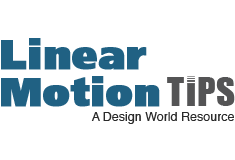
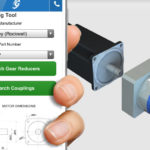
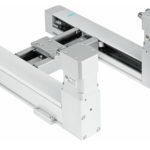
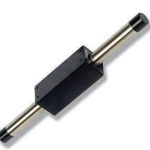
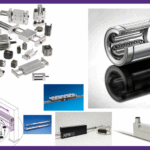
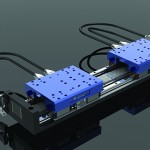

Leave a Reply
You must be logged in to post a comment.